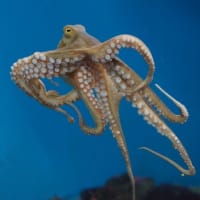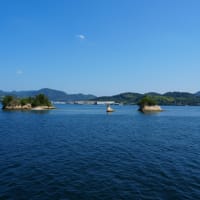April 19, 2019
The following is from an article in the Yomiuri Shimbun on 4/13.
One of the significant reasons Japan is a true superpower is the craftsmanship that the Japanese people possess.
It is no exaggeration to say that their opposites are Asahi, NHK, and the so-called cultural people...the people who are to be despised.
The name of Kikuhime, a sake I drank many times at a (Japanese-style) restaurant when I was one of the best drinkers in Osaka, also comes up.
The master of this ryotei, my most regular customer, suggested a blindfolded sake test to me.
He told me sake is the hardest to guess, even though we couldn't tell.
One day, when I was the only customer late at night, he suddenly said, "Let's do it now," and brought out three different kinds of sake.
At the time, I had answered all the questions correctly in a blindfolded contest of 12 different kinds of beer, so I was confident, but I knew that sake was complex.
Sake has a complex flavor because it contains more than 20 kinds of amino acids.
But even so, I still guessed them all quite brilliantly.
The master was amazed.
He had even more respect for my taste buds (laughs).
Koji is the lifeblood of sake brewing
Exploring the tastes of foreigners
Touji, a master craftsman of our time
Mr. Naohiko Noguchi
I had a two-year blank after retiring as a toji. Still, I returned the year before last at a sake brewery in Komatsu City, Ishikawa Prefecture, which I named the "Naohiko Noguchi Institute.
One of his fans said, "If you are well, please make good sake again."
My body doesn't feel good if I don't do anything at home.
Working is the best thing for me.
I also set up a tasting room in the laboratory.
I am a non-drinker and cannot drink.
That is why I have been listening to my customers and making something they are happy with.
I ask people to drink sake here and listen to their opinions.
We ask them to write their opinions in a notebook and use them in our sake brewing process.
I have seven young employees in their 20s and 30s.
I get up at 4:00 a.m. every morning to work with them on the sake brewing.
Once the brewing starts, they stay overnight in the dormitory attached to the brewery.
I arrived last September and will work until May.
My wife and children were against me returning to the Toji position.
I would be away from home for more than six months.
I came here as if I was trying to escape.
When I first became a brewer, Kikuhime, I realized that you can't make sake based solely on your thoughts.
The brewery is in Tsurugi Town (now Hakusan City), Ishikawa Prefecture.
When I was young, I learned sake brewing in the Tokai region.
It is a warm region, so the sake is beautiful.
I was in my first year as a brewer, and when I started making sake, the reputation was utterly negative.
Many people said, "The taste is bland. I can't drink it.''
In Tsurugi, loggers and other mountain workers thrived.
Local people would come down from the mountains in the evening, hungry, and sit on the porch of a liquor store and drink two cups of sake.
Drinking this drink would help them fall asleep and wake up feeling refreshed.
What they want is a strong sake.
However, they wanted to avoid the Tokai region's beautiful sake.
Around that time, I came across the Yamahai method of sake brewing.
At that time, the mainstream method of making unrefined sake (yeast multiplied for fermentation) was the fast brewing method, in which commercially available lactic acid was added.
Yamahai, on the other hand, takes time and effort to incorporate naturally occurring lactic acid bacteria. But the taste is entirely different.
I went to a sake brewery in Kyoto for three years.
In the spring, I would bring the sake I had brewed to them and ask their opinions.
After 10 or 15 years, I finally became confident as a toji.
Sake is made from rice.
If you can't taste the umami of the rice, it's not sake. It also has a lingering aftertaste that goes down your throat and a crispness after passing through it.
It has a sharpness that makes you wonder where that flavor went.
The more you drink it, the more you want it again.
As the saying goes, "Ichikoji, nikan, sanzukuri," or "one koji, two wan, three tsukuri," koji making is the lifeblood of sake.
I always eat koji when I enter the koji room.
I check the texture of the koji when I chew it to see if the mycelium can easily penetrate the rice.
I ate koji two or three times a night and had complete dentures in my 40s because of all the cavities.
Foreigners who drank my sake in Tokyo would come to the countryside and buy it.
From now on, I want people to drink sake overseas as well.
Even Japanese people's tastes change depending on the region and the times.
We need to study the tastes of people overseas and make efforts to create a market.
When we established this place, we were fortunate to receive many applications.
More than a dozen of my former apprentices are now active as toji (master brewers) in various parts of Japan.
Even now, I receive phone calls from them and exchange sake with them.
The young people here are also very eager to talk to me.
An artisan should learn by doing.
(Interviewer: Hiroyuki Yoneyama)


















